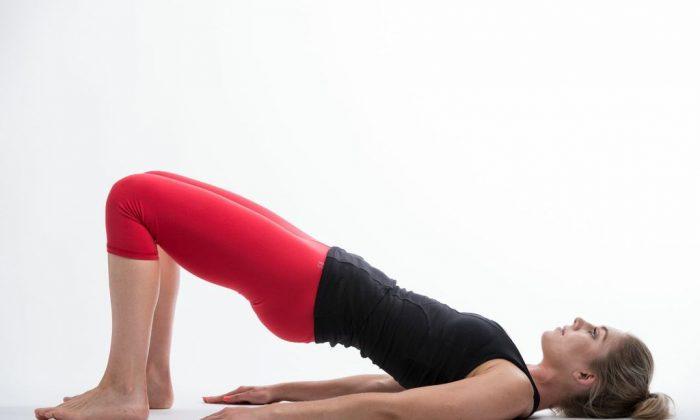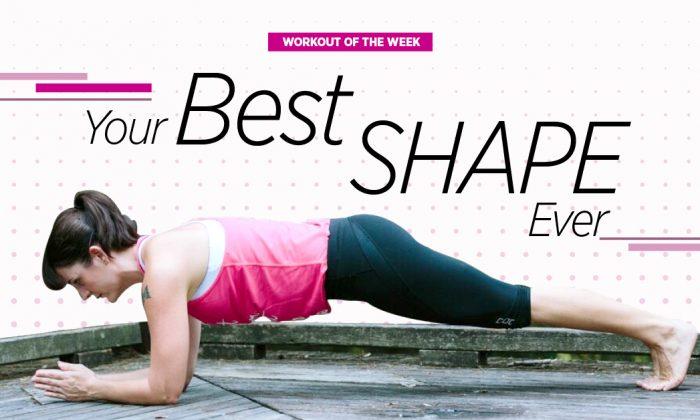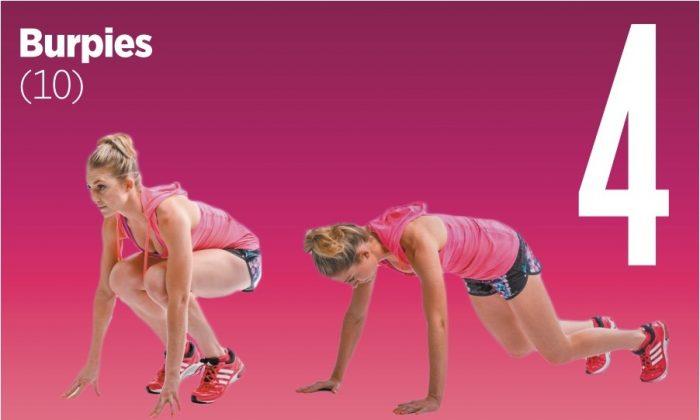Due to the sedentary nature of our lifestyles—particularly the many jobs that require sitting all day in front of a computer—we’re liable to develop weak, sore, tight backs. Many studies now surfacing say that sitting down for extended periods of time is one of the primary causes of back problems.
The way we sit creates compression through our lower backs and pelvic muscles, causing immense muscle and tendon tension in those areas. This lumbo-pelvic region (hip and lower back) plays a big role in our movement mechanisms.
The negative effects of sitting eventually affect other parts of our bodies. All are linked through muscles, nerves, tendons, and fascia—the thin sheath of fibrous tissue that runs from our heads to our toes.
I recently took two weeks away from my normal job teaching Pilates and other group fitness classes and to work on a project that had me sitting for consecutive days in a row, and my whole body, most noticeably my back and hips, felt hugely uncomfortable. The other thing that I noticed was the lack of energy I felt from being stagnant.
If you do sit at as desk all day for your job, there are a few things you can do to lessen the impact on your body.
Make sure you have the best possible chair. Choose the most ergonomic chair possible. I highly recommend paying whatever it costs to get the right seat, as it will make a big difference. Of course, in a perfect world, your employer would cover the cost, or at least contribute. If that doesn’t happen, buy one yourself. It will be worth in the long run.
Stand up on a regular basis and move your body.
When you exercise, incorporate movements that strengthen your back and stomach, as this will make it much easier to hold your body in a better position while you are sitting.
Try sitting on a Swiss ball for short periods of time during the day. Start by sitting on it for 10–15 minutes a few times a day, and then build up to longer periods. This will help you to activate your deep core muscles, and the small bouncing motion you can do while sitting on the ball will help with your energy levels.
Do the following sequence a couple of times a week at the end of another session. It won’t take long, and the benefit will be significant.
This workout is aimed at strengthening and stretching your back. These movements are good for your spine and will help keep your whole back strong and long.
Swimming
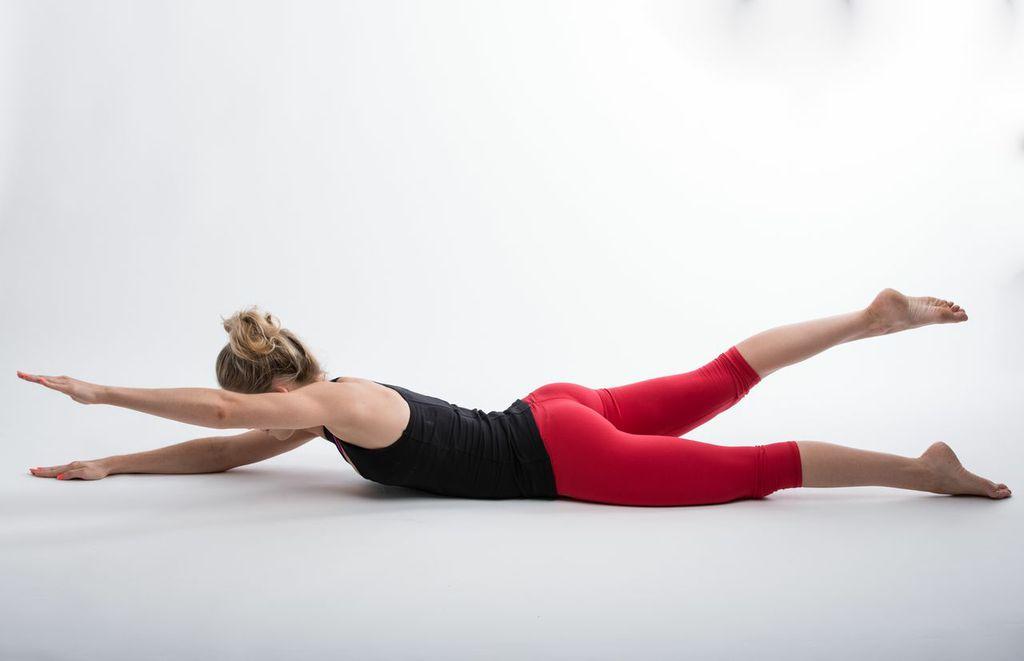
(Model: Alana Ford/Bris Aus), (Photo by Willis Lim/Bris Aus)
Lie face down on the floor, extend your arms out in front of your body, and press your pubic bone toward the floor to lengthen your lower back.
Then draw your shoulders together toward your spine, imagining you are juicing an orange between your shoulder blades. Keep your chest slightly lifted away from the floor. Your palms should be facing each other with your arms slightly wider than shoulder-width apart.
- Inhale as you lift your right arm and left leg away from the floor. Focus on using the muscles in the back of your thighs, behind your shoulders, and in your buttocks.
- Exhale as your lower your limbs to the floor.
- Repeat on the other side.
Do 16 reps, eight per side.
To make the movement more challenging, lift one side as you lower the other, rather than waiting until the lifted side is resting on the floor.
Bridge
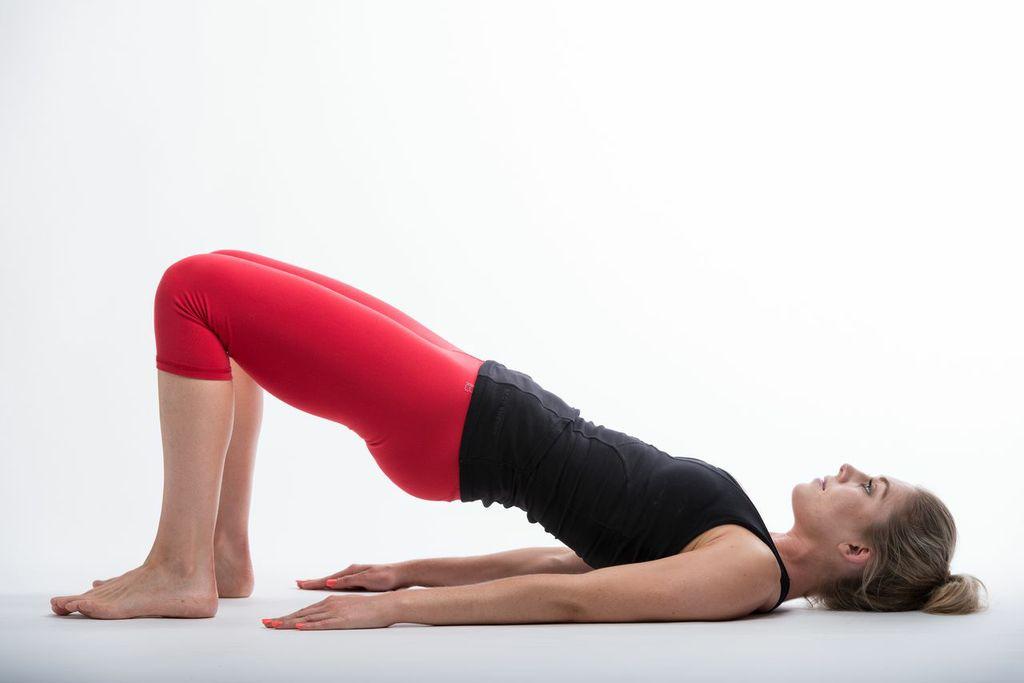
(Model: Alana Ford/Bris Aus), (Photo by Willis Lim/Bris Aus)
Lie on your back with your feet about 12 inches from your hips and your arms resting beside your body with your palms facing down so you can gently press into the floor to activate your upper back. This will help to keep your shoulders from rolling forward.
- Rock your lower back toward the floor, and then continue to roll up, peeling the rest of your spine away from the floor.
- Stop when your hips are lifted and in line with your shoulders and knees in a diagonal line. Hold the position, and then roll your spine back down toward the floor.
Complete between 5–10 bridges.
To get the most out of this movement, perform it slowly. Imagine your spine is a string of pearls and you are trying to lift one pearl at a time. Do the same when you lower.
This is particularly good for spinal mobility. As we age, our spine starts to fuse together in different sections, and this is a good move to prevent spinal fusion. It is also great for strengthening your buttocks and hamstrings.
Airplane
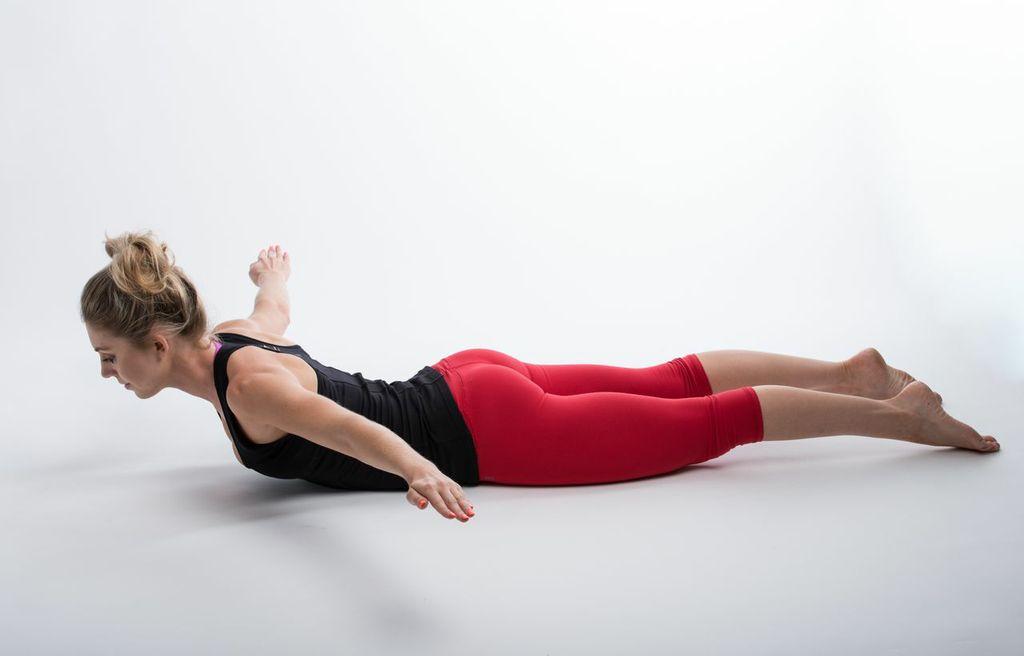
(Model: Alana Ford/Bris Aus), (Photo by Willis Lim/Bris Aus)
Lie face down with your arms reaching out to the side of your body. Gently press our pubic bone into the floor to lengthen your lower back. This can also make it easy to activate your lower abdominals.
- Inhale as you lift your head, shoulders, and arms away from the floor, keeping your feet on the floor.
- Exhale as you lower your head and arms back down.
Repeat this 12¬–16 times.
You don’t need to lift too high, as doing so would overwork your lower back. As you lift, gently squeeze between your shoulder blades so that your upper and mid back are the main areas getting the workout.
Child Pose
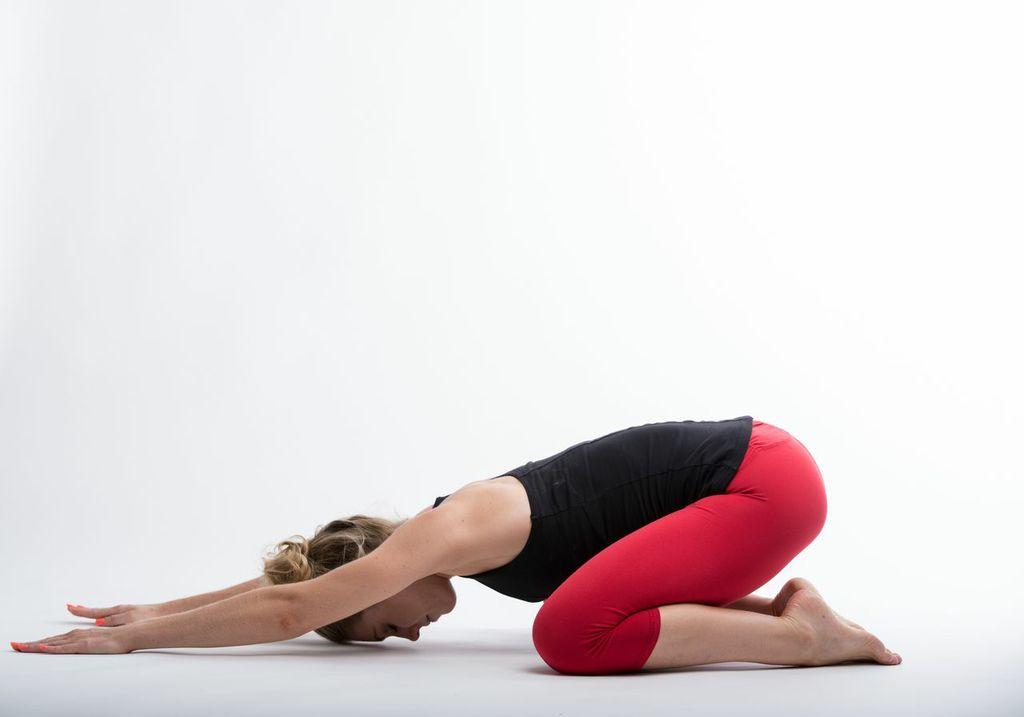
(Model: Alana Ford/Bris Aus), (Photo by Willis Lim/Bris Aus)
- Position your body on all fours.
- Lower your bottom to your heels, opening your knees out wide to allow your chest to get closer to the floor. Gently reach your hands away from your body.
Take deep, slow, long breaths and allow this beautiful stretch to lengthen and relax your back.
Emma-Kate Stampton certifies Pilates instructors and is a certified personal trainer. With 10 years of industry experience, she is passionate about sharing the gift of health and well-being. Emma-Kate is based in Brisbane, Australia.

